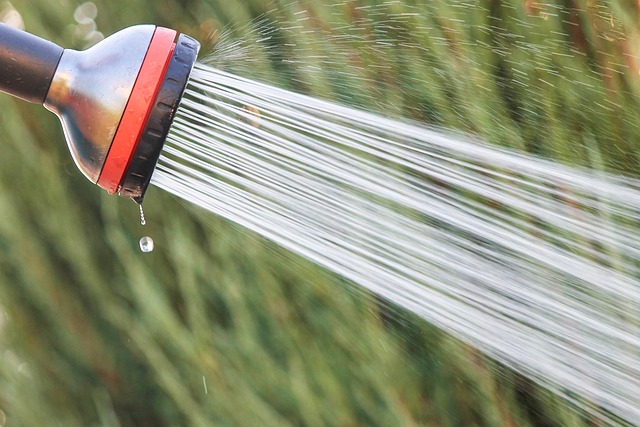Smart Sprinkler Systems for Greener, Water-Savvy Lawns
Discover how a properly designed sprinkler system delivers consistent irrigation while cutting water waste. Learn about key components, system types, maintenance needs, and cost ranges to help homeowners and landscapers choose an efficient, low-effort irrigation solution that supports healthy lawns and gardens.

A dependable sprinkler system takes the guesswork out of watering and helps landscapes thrive with less water and effort. These automated irrigation setups distribute water evenly across lawns, planting beds, and garden areas so plants receive the right amount at the right time. Below is an overview of how sprinkler systems function, the benefits they bring, the main types available, design tips, routine upkeep, and expected costs.
How sprinkler systems function
Most residential and commercial systems share a few core components: a controller, valves, piping, and sprinkler heads. The controller is the central timer and brain of the system; when a program runs it sends a signal to the zone valve. Valves open to allow water to travel through the underground piping network and exit via sprinkler heads that atomize or drip water across a set coverage area. Proper planning ensures each zone gets the correct amount of water based on plant needs and site characteristics.
Key components at a glance:
- Controller: Programmable timer that schedules watering events and can include smart features such as weather or moisture-based adjustments.
- Valves: Electrically or hydraulically actuated devices that control water flow to individual zones.
- Pipes: Underground supply lines that distribute water from the source to each sprinkler head.
- Sprinkler heads: Delivery points that spray or drip water in specific patterns and distances.
When the controller initiates an event, the corresponding valve opens, water flows through the piping, and the heads apply water according to their flow pattern. This sequence ensures efficient, uniform irrigation across each designated zone.
Benefits of installing a sprinkler system
Installing an automated irrigation system offers several advantages for both homeowners and commercial property managers:
- Water conservation: Timed watering during cooler parts of the day and advanced controls reduce evaporation and runoff.
- Time savings: Automation removes the need for manual hose or sprinkler setup, freeing up time for other tasks.
- Uniform coverage: Properly designed systems deliver consistent moisture to all areas, avoiding dry patches or overwatering.
- Healthier plants: Reliable, correct watering promotes deeper roots and better disease resistance.
- Property value and curb appeal: A well-kept landscape enhances visual appeal and can add market value.
Types of sprinkler systems
Different systems suit different landscape types and water goals. Common options include:
- Spray systems: Fixed spray heads distribute water in a fan pattern and work well for small to medium lawns and tight spaces.
- Rotor systems: Rotors produce rotating streams and are efficient for larger expanses because they cover more ground with fewer heads.
- Drip irrigation: Delivers slow, targeted water directly to plant roots, ideal for garden beds, hedges, and individual plants.
- Micro-spray systems: Small, low-flow emitters that bridge the advantages of spray and drip—good for beds, borders, and containers.
- Smart irrigation: Controllers that use local weather data, soil moisture sensors, or evapotranspiration rates to automatically adjust schedules and conserve water.
Designing an effective system
A thoughtful design maximizes efficiency and longevity. Consider these steps when planning:
- Survey your landscape: Note size, shape, slopes, soil types, sun exposure, and plant varieties. These factors influence water needs and head placement.
- Create watering zones: Group plants with similar moisture requirements together so each zone can be scheduled appropriately.
- Select the right heads and spacing: Choose heads that match the area to be covered and avoid mismatches that cause dry spots or runoff.
- Account for water pressure and flow: Design the system to suit your available municipal or well supply; boosters or pressure regulators may be necessary.
- Allow for growth and change: Leave room in the layout for future planting or expansions.
- Know local rules: Check for watering restrictions, permitting requirements, or rebate programs for efficient systems.
Maintenance checklist
Routine care keeps an irrigation system running efficiently and helps prevent wasteful failures:
- Inspect heads and nozzles: Look for debris, clogs, or damage and correct alignment as needed.
- Clean filters and strainers: Remove sediment and organic material to maintain good flow.
- Repair leaks promptly: Patch leaking pipes or fittings to avoid water loss and possible landscape damage.
- Adjust schedules seasonally: Reduce frequency and duration during cooler months and increase during hot, dry spells.
- Winterize when required: In colder climates, drain or blow out lines before freezing temperatures to prevent burst pipes.
- Professional tune-ups: Annual inspections by an irrigation specialist can identify pressure issues, broken parts, or inefficiencies.
Typical installation costs
Below is a general cost guide. Actual prices vary by region, property size, and system complexity.
| System Type | Average Cost Range | Typical Cost Drivers |
|---|---|---|
| Basic Residential | $1,500 - $3,000 | Small lawns, simple zoning |
| Mid-Range Residential | $3,000 - $6,000 | Larger properties, multiple zones |
| High-End Residential | $6,000 - $10,000+ | Smart controllers, extensive landscaping |
| Commercial Systems | $10,000 - $50,000+ | Large coverage areas, specialized controls |
Prices, rates, or cost estimates mentioned are approximate and subject to change; independent research is recommended before making financial decisions.
Final considerations
Investing in an irrigation system pays dividends through saved time, more efficient water use, and healthier plantings. Whether you choose a simple spray layout for a small lawn, a rotor system for broad turf, or a combination that includes drip lines and smart controls, planning and maintenance are the keys to performance. Consult local professionals for a site-specific design and consider smart technologies and sensors to optimize watering based on real weather and soil conditions. With the right system, you can maintain a vibrant landscape while using water more responsibly.






